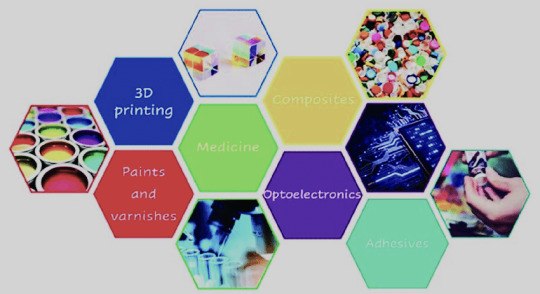#UVcuringTechnology
Explore tagged Tumblr posts
Text
Photopolymers Market Outlook: Emerging Applications in Biomedical Engineering and Flexible Electronics
The global photopolymers market is anticipated to reach USD 5.78 billion by 2030, according to a new report by Grand View Research, Inc. The market is expected to expand at a CAGR of 10.6% from 2023 to 2030. Rising demand for prototyping across the automotive industry and designs for understanding complex surgical procedures have increased the demand for photopolymer for 3D printing. Furthermore, increasing demand for artificial jewelry and prosthetics across the global population are further propelling the market growth.

Photopolymers Market Report Highlights
The European market was valued at USD 2.60 billion in 2022 and is expected to grow at a CAGR of 10.6% from 2023 to 2030
High-performance 3D printing refers to technologies that endure exceptional capabilities in terms of high speed, precision, material options, and the highest print quality. These high-performance 3D printing technologies include selective laser melting (SLM), electron beam melting (EBM), continuous liquid interface production (CLIP), and multi-material 3D printing
Stereolithography (SLA) is the most commonly used 3D printing technology across the world. It utilizes laser light sources to carry out 3D printing of objects. The global demand for SLA-based 3D printing has rapidly increased in recent years owing to its ability to print 25–300-micron components at a high XY resolution utilizing plastic resins and photopolymers
Photopolymers in 3D printing across the dental industry have witnessed a rise in demand in the past few years on account of their benefits, such as high-quality molds, perfect & precise designs, smoother surfaces, and higher durability, in comparison to the traditional process of manufacturing molds using thermoforming
For More Details or Sample Copy please visit link @: Photopolymers Market Report
Photopolymers are imaging compositions, based on polymers, oligomers, and monomers which can be polymerized accordingly and cross-linked upon image-wise exposure to light radiation such as ultraviolet (UV) rays. Photopolymers used across VAT polymerization in the 3D printing processes are used in liquid form and when exposed to UV rays in the form of a laser (SLA 3D printing technology) or scattered light source (DLP/cDLP 3D printing technology), undergo polymerization process which hardens them into the desired shape, as per the requirement of the final 3D printed product.
Photopolymers have gained traction from VAT polymerization-based 3D printing technologies, including stereolithography (SLA), digital light processing (DLP), and continuous digital light processing (cDLP) owing to their higher conversion from the liquid state to solid state, higher aesthetic component quality, enhanced versatility, material performance, and part longevity. The manufacturing of prototypes for jewelry, dental, and automotive, among others, are the market drivers for the market across the globe.
The market space is highly competitive with the introduction of new technologies for high-quality and high-speed 3D printing by various companies. For instance, in May 2022, Merit3D set a record for printing 60,000 parts in a time period of eight hours. The record was accomplished using Magna 3D printers for high-speed polymerization technology offered by Photocentric.
#PhotopolymersMarket#3DPrintingMaterials#PhotopolymerResins#UVcuringTechnology#AdditiveManufacturing#DigitalPrintingTech#HolographicMaterials#FlexibleElectronics#SustainableMaterials#InnovationInPrinting#AdvancedManufacturing#FutureOfMaterials
0 notes